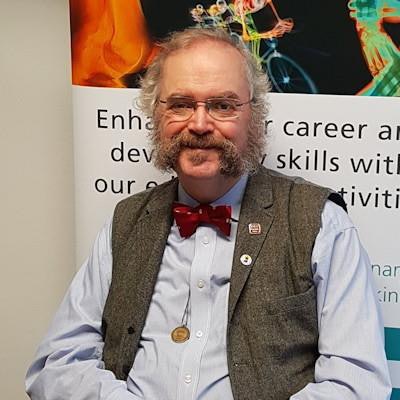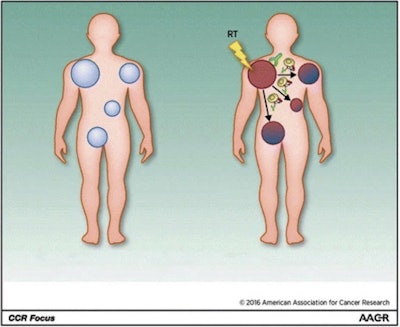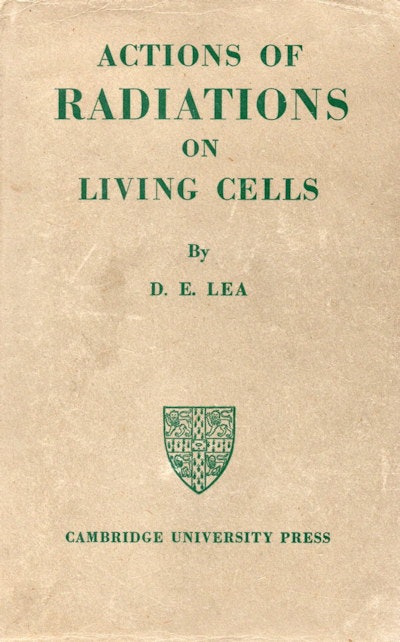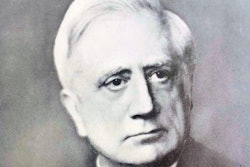
The British Institute of Radiology (BIR) recently posted a fascinating podcast involving the leading radiation oncologists Dr. Silvia Formenti and Dr. Sandra Demaria, both from Weill Cornell Medical College, New York. The topic was the abscopal effect, and the special focus formed part of the British Journal of Radiology's 125th anniversary celebrations.1
The abscopal effect occurs when radiation treatment -- or another type of local therapy -- not only shrinks the targeted tumor but also leads to the shrinkage of untreated tumors elsewhere in the body, according to a statement from the U.S. National Cancer Institute (NCI). Although the precise biological mechanisms responsible for the abscopal effect are still being investigated, the immune system is thought to play an important role, the NCI added.
 Researchers are studying how treating a single tumor with radiation, or radiation plus other treatments, may stimulate an immune response against tumors elsewhere in the body -- a response known as the abscopal effect. Courtesy of the NCI. Adapted from Clinical Cancer Research, September 2016.
Researchers are studying how treating a single tumor with radiation, or radiation plus other treatments, may stimulate an immune response against tumors elsewhere in the body -- a response known as the abscopal effect. Courtesy of the NCI. Adapted from Clinical Cancer Research, September 2016.In the BIR podcast, Formenti and Demaria spoke about the history of the abscopal effect, how the field has progressed, the mechanisms of in situ vaccination by radiation, key challenges in the clinic, and what they both see in the future for this area of research.
They noted that the definition of abscopal responses is based on the concurrent presence of metastatic sites that will regress after focal radiotherapy to one site. This was based on Dr. R.H. Mole's observation from the 1950s that tumor regression was sometimes observed in nontreated lesions.
Formenti and Demaria elaborated on the recent increase in knowledge of the role played by the immune system in cancer, and this has enabled the study of the implication of immunity in the abscopal effect of radiation. Ionizing radiation can stimulate antitumor immunity, and these effects have become clinically significant in contemporary cancer immunotherapy. Therefore, abscopal responses in individual patients have become an attainable aim. The therapeutic partnership of radiation therapy and cancer immunology is discussed in detail.
The early research
Reality is always more complex and interesting than we might imagine, and apparently simple phenomena may have an unsuspected complexity. One theory is the action of radiation on living organisms may be confined to the irradiated tissue and that tissue outside the primary beam would be unaffected.
Through the work of radiobiologists such as Douglas Lea, PhD,2 and Hal Gray, PhD,3 our knowledge of the interactions of radiation and tissues increased. The target theory for the action of radiation shows effects due to the localized action of small numbers of ionizations. The nontarget theory describes a "physiological" change in the cell with the effect not strictly localized to the particular part of the cell where the ionization was produced.
 The classic book by Douglas Lea, Actions of Radiations on Living Cells, 1946.
The classic book by Douglas Lea, Actions of Radiations on Living Cells, 1946.In oncology, the abscopal effect refers to the ability of localized radiation to trigger systemic antitumor effects. In 1953, Mole referred to "whole body irradiation," and described the abscopal effect as "an action at a distance from the irradiated volume but within the same organism."4 He noted the "complex interdependence of cells in the mammal" and so, as a result, many workers investigated much simpler organisms, such as bacteria or pollen grains.
Mole doubted the relevance of such work to whole body irradiation. Mole thought that whilst bacteria and pollen grains are cells, they are different from cells as seen in mammals. Cells are not all the same in their response to radiation, and a complex organism is different from a simple one. Mole therefore argued that the interdependence of all the cells in an organism's body means that damage to one cell must inevitably alter the body as a whole, and will affect all the other cells.
So does irradiation of a mammal have an effect at a distance from the volume irradiated? It became important to ask: How much of this abscopal effect occurs and how is it produced? Ab- is a prefix meaning "position away from" and scopos (Latin) is a mark or target for shooting at.
Potential applications
Clinical and radiation oncology communities have recently expressed interest in the abscopal effect, and it was discussed at the European Society for Radiotherapy and Oncology's annual meeting in 2018, held in Barcelona that April. A key topic was that a tumor damaged by radiation would show increased antigenicity, therefore creating the possibility of enhancing immune therapies.
That radiation therapy might influence the immune response for clinical benefit was in fact realized in the early days of radiology. Max Cushman Rice from Chicago discussed "The Roentgen Ray in Tuberculous Adenitis" at the 1904 American Roentgen Ray Society Annual Meeting. Rice said that no subject was of greater intertest to the medical profession than tuberculosis. He perceptively commented that tuberculosis could be arrested, but that "in any instance it must be by increasing the natural resisting power of the tissues." As a result of this, the interest of the medical world "centers itself now about the various forms of light (treatment), such as the Finsen and the Roentgen rays, as a cure for tuberculosis."
 Dr. Adrian Thomas. Image courtesy of the BIR.
Dr. Adrian Thomas. Image courtesy of the BIR.Radiation was used to treat asthma using a variety of techniques, and splenic radiation in particular was used with considerable success.5 S. Gilbert Scott reviewed the use of radiation in increasing patient resistance and immunity, and he particularly promoted the use of low doses for stimulating function.6
This whole area shows a great deal of potential. In general, we treat infections and cancers with antibiotics and chemotherapy. However, the ideal treatment of any disease would be to stimulate the body's own response by enhancing the tissues ability to heal itself. In spite of all of our recent advances, these are still early days.
References
- Demaria S, Formenti SC. The abscopal effect 67 years later: From a side story to center stage. Br J Radiol. 2020;93(1109):20200042.
- Lea D. Actions of Radiations on Living Cells. Cambridge University Press; 1946.
- Gray LH. Actions of Radiations on Living Cells, 1946 and after (The Second Douglas Lea Memorial Lecture). Br J Radiol. 1952;25(293):235-244.
- Mole, RH. Whole body irradiation; radiobiology or medicine? Br J Radiol.1953;26(305):234-241.
- Scott SG. Treatment of asthma by radiation. Br Med J. 1929;1:9-11.
- Scott SG. Wide field Roentgen therapy. Am J Roent Rad Ther. 1940;43:1-16.
Dr. Adrian Thomas is chairman of the International Society for the History of Radiology and honorary historian at the British Institute of Radiology.
The comments and observations expressed herein do not necessarily reflect the opinions of AuntMinnieEurope.com, nor should they be construed as an endorsement or admonishment of any particular vendor, analyst, industry consultant, or consulting group.




















